

Uh oh...
It appears that you're using a severely outdated version of Safari on Windows. Many features won't work correctly, and functionality can't be guaranteed. Please try viewing this website in Edge, Mozilla, Chrome, or another modern browser. Sorry for any inconvenience this may have caused!
Read More about this safari issue.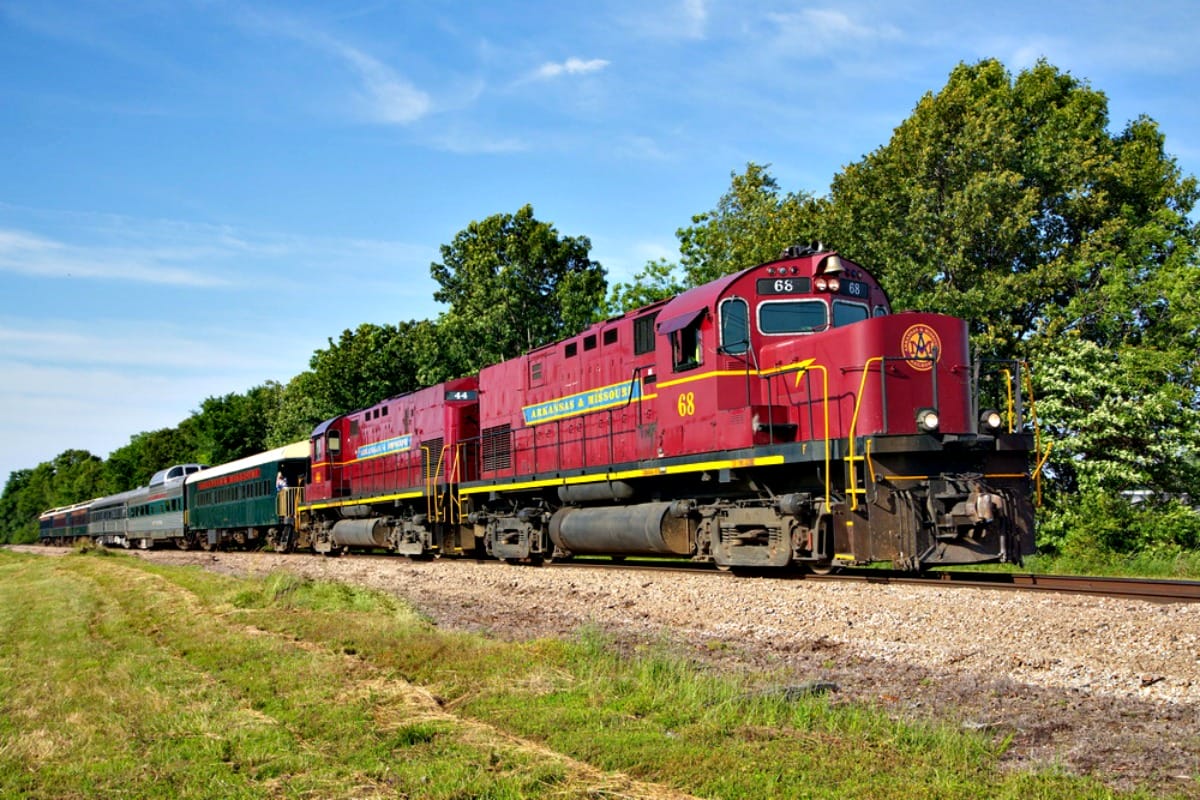

My grandparents lived only a few blocks from the railroad tracks. While my cousins and I played in the yard, the long, low whistle of a train would often cut through our game. My grandfather would appear almost immediately. “You hear that train?” he’d ask. “Let’s go count the cars.” We’d troop down the hill to the tracks, a gaggle of kids, Grandpa herding us with a cigarette between two fingers. We held our hands over our ears as the train cars clicked past. Grandpa never covered his ears. He always waited until the last railcar rolled by, look at us and say, “That was some train.”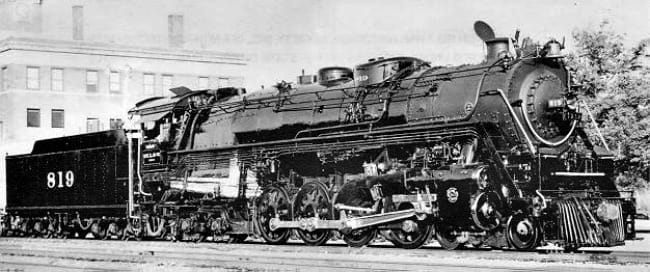
The first railroad company in Arkansas was formed in 1852, though plans had been in the works to bring the railroad to Arkansas since statehood. However, railroad companies were expensive to create and operate. The first track wasn’t laid until 1858, from West Memphis to Madison, in what would become the Memphis and Little Rock Railroad. Soon after, the Civil War broke out and put a stop to railroad building.
After the end of the war, in 1866, renewed interest in the railroad spurred former Confederate general Nathan Bedford Forrest, along with C.C. McCreanor, to complete the Memphis and Little Rock line. Railroad building in Arkansas gained steam. In 1869, the Little Rock and Fort Smith Railroad Company began building a facility in Argenta, on the north side of the Arkansas River in Little Rock. By 1871, 86 different companies held charters to lay track for new lines, but in reality, only 271 miles of track existed in the state. Problems continued to plague these new companies, from worker strikes to the collapse of financial backing.
Despite the difficulties, two companies, the Little Rock and Fort Smith, and the Cairo and Fulton managed to complete their lines by 1874, bringing rail travel to new heights in the state. Their lines connected Little Rock to Missouri and also to Ft. Smith, where freight could be loaded onto steamer ships. This opened the state up to commerce like never before, transporting lumber, mining products and other goods, as well as people. A railroad meant news from other places, faster mail delivery, economic prosperity and greater ease of movement.
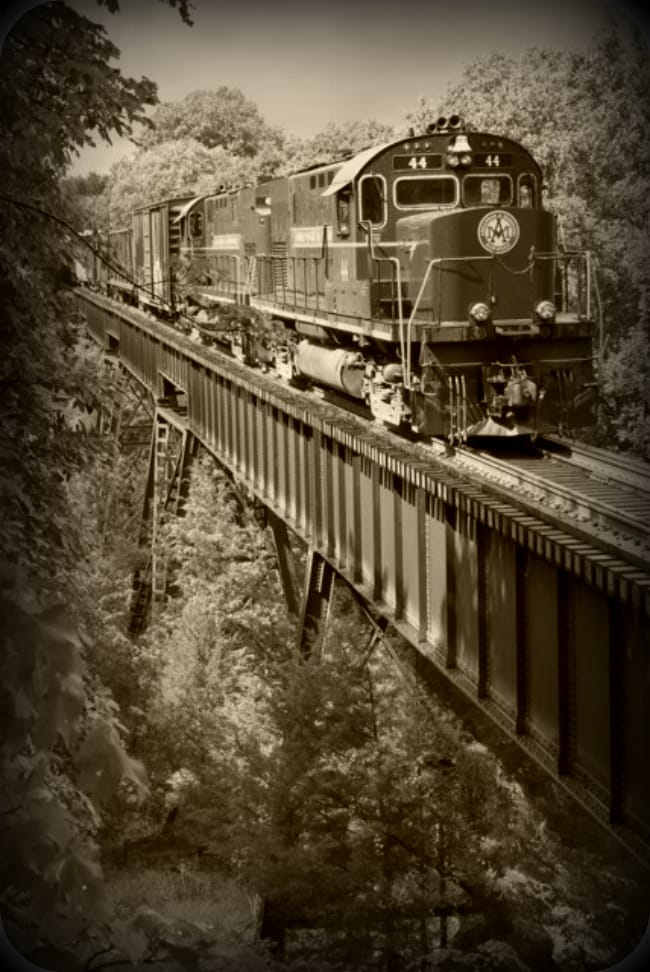
Railroads weren’t without danger and laying new track often meant blasting through rock, negotiating around the steepness of the Ozarks and Ouachitas, and dealing with the oppressive heat and mosquitoes found in the Delta region. Still, building persisted. By the time Arkansas reached the turn of the century, it boasted 3,360 miles of track across the state. Some of these lines were major thoroughfares, like the St. Louis, Iron Mountain and Southern Railway, which connected St. Louis to Texarkana. This railroad was robbed twice, by the James Younger Gang in 1874 and the Dalton Gang in 1893.
Many shortline railroad lines cropped up in this era to connect towns to major railroad lines. The Dardanelle and Russellville Railroad, which began operating in 1873 and claims five miles of track from the Arkansas River to the Union Pacific Interchange near downtown Russellville, is the oldest, continuously operating line in Arkansas. The shortest line was built in Augusta, Arkansas. After being bypassed by the St. Louis and Iron Mountain Railroad, the town funded their own one mile track to connect to the line.
In 1875, a young man named Joseph “Diamond Jo” Reynolds decided to build his own line from Malvern to Hot Springs after making the trip to Hot Springs by stage coach. After the long, bumpy ride, he vowed to never again reach the town’s healing waters by coach. He ran his first train a year later. Tickets from Malvern to Hot Springs cost $2.50, a portion of the cost of a stage coach journey and a shorter, more pleasant trip. The railroad operated until 1951.
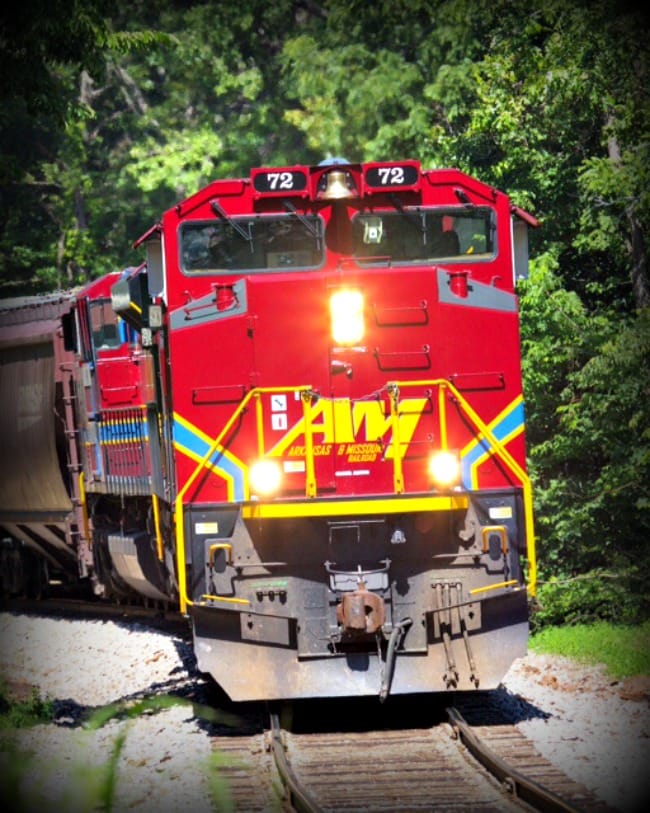
In the 20th century, railroad track continued to be laid across the state, reaching 4,700 miles of track by 1941. However, the railroad era was already fading. Train accidents could easily put a line out of business. The increased use of the automobile began to cut into railroad traffic. When the Federal Aid Highway Act was created in 1956, it spelled the end of many railroad lines as travel by car became easier than ever, and airlines gained an increasing share of passengers and commerce as well.
By the time my grandfather walked me down to count train cars, passenger trains in Arkansas were a thing of the past, with the exception of Amtrak. The Union Pacific Railroad acquired many of the lines still in existence across the state and now runs 1,325 miles of track, carrying freight through the state. The UP still maintains the maintenance facility built in North Little Rock so many years ago.
Arkansas has 25 railroad companies currently operating in the state. Though the heyday of Arkansas railroads is gone, those whistles can still be heard across the state as trains traverse the current 2,730 miles of track. The next time a train catches you at a railroad crossing, you can remember the many hours of toil and expense that opened railroading in Arkansas. Don’t forget to count the railcars, too.
As my grandfather would say, “That’s some train.”
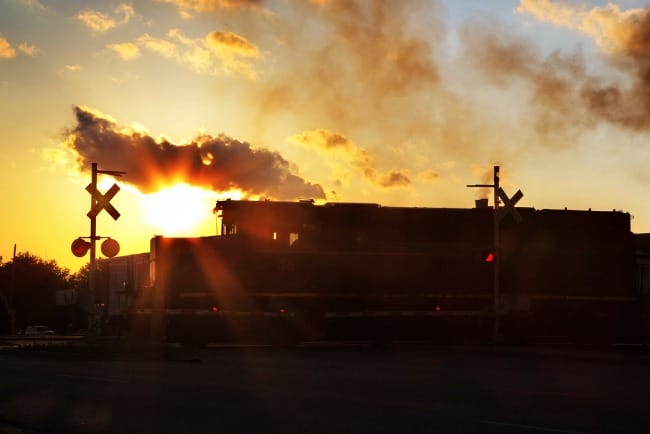
Want to learn more about the history of railroads in Arkansas?
Visit the Arkansas Railroad Museum in Pine Bluff for an extensive history of railroading across the state. The museum had many train cars on display, as well as Engine 819, a steam engine built in Pine Bluff in 1942.
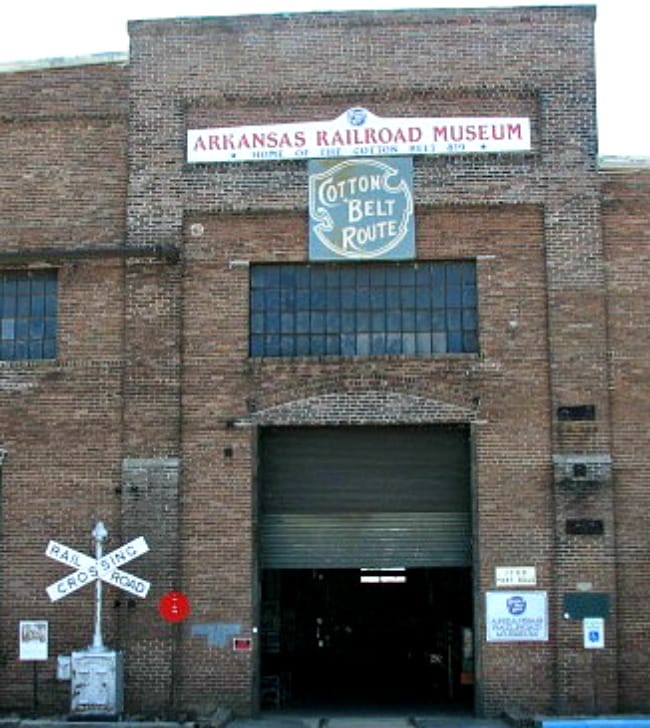
Many former train depots in Arkansas have been converted into museums as well. Check to see if one is located near you.
Central Delta Depot Museum – Brinkley
Delta Cultural Center – Helena
Ft. Smith Trolley Museum – Ft. Smith
Hope Depot Visitor’s Center and Museum – Hope
Mammoth Springs State Park (restored depot) – Mammoth Springs
McGehee Depot Museum – McGehee
Mena Depot Center – Mena
Morrilton Depot Museum – Morrilton
Nevada County Depot and Museum – Prescott
Ozark Depot Museum – Ozark
Pine Bluff/Jefferson County Historical Museum – Pine Bluff
Russellville Depot Museum – Russellville
Springdale Depot Museum and Excursion Train – Springdale
Van Buren Depot – River Valley Museum and Excursion Train Stop – Van Buren
You can still ride the rails in Arkansas. The A&M Railroad operates a scenic excursion train Springdale to Winslow and Van Buren with many specials throughout the year. Check out their website for upcoming events and to purchase your train ticket.
The Eureka Springs and North Arkansas excursion train runs April through October. Find more information at esnarailway.com.

Amtrak runs the only true passenger train in Arkansas. The Texas Eagle passes through Walnut Ridge, Little Rock, Malvern, Arkadelphia and Texarkana on its route from Chicago to Dallas.
Photos courtesy of the Arkansas Railroad Museum in Pine Bluff and the A&M Railroad in Springdale and used with permission.
Join the Conversation
Leave a Comment
4 responses to “Count the Railcars – Railroads in Arkansas”
 Leave a Reply
Leave a Reply
We do the work.
You check your email.
Sign up for our weekly e-news.
Get stories sent straight to your inbox!










 Leave a Reply
Leave a Reply
[…] The Arkansas Railroad Museum in Pine Bluff building includes over 70,000 square feet of floor space and 17 tracks, and houses two display rooms and many displays. The project began in 1983 with a few folks who were interested in bringing Steam Locomotive 819 back to Pine Bluff where she had been built by the Cotton Belt Shops. It was the last steam engine built in the facility – which now houses the museum – and what began as a single effort grew into the museum it is today. Read more about railroads in Arkansas here on OnlyinArk.com. […]
[…] family, head to the Arkansas Air and Military Museum in Fayetteville or check out the trains at the Arkansas Railroad Museum in Pine […]
[…] arrival of the train established many smaller south Arkansas communities and proved a great success for connecting local […]
[…] many beloved Arkansas towns, Cabot traces its roots to the railroad. Though the city is the largest in Lonoke County, it wasn’t the first settlement. In 1822, […]